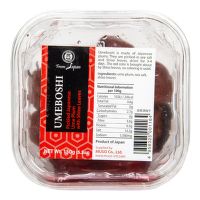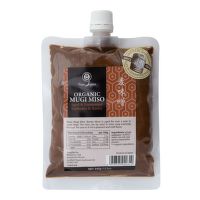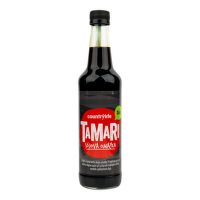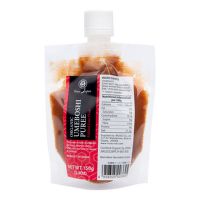Description
Shoyu comes from China and it is already 2,800 years old. It has gradually spread throughout the Southeast Asia and is now a traditional part of Asian cuisine. However, it has nothing in common with a cheap "soy sauce". Shoyu does not contain any flavour enhancers, dyes or artificial sweeteners. In addition to the basic four flavours (sweet, bitter, salty, sour), there is also the fifth taste - umami. It is called "delicious", "taste of maturity" and enhances the taste of the food. This fifth taste can also be found in fermented products - so that in shoyu soy sauce as well.
Tip for using:
- Cashew dressing
Blend 2 tablespoons shoyu, 4 tablespoons olive oil, 1 tablespoon balsamico vinegar and a handful cashew nuts - Dressing for a salad
Mix sesame oil, shoyu, agave syrup, apple cider vinegar
The dressing tastes great with ruccola salad with avocado - Easy dressing for a salad
Mix shoyu with olive oil and vinegar - Sauted oyster mushroom
Saute the oyster mushroom in a little bit of olive oil, when mushrooms are half cooked, add shoyu and finish sauteing - Marinades
For vegetables, meat and fish
Mix shoyu with honey or maple syrup or agave syrup, spread the mixture over the vegetable, meat or fish and bake in the oven or grill; glazed zucchini, pumpkin or carrot taste delicious as well - Tomato based dishes (e.g. sauces for pasta)
shoyu reduces the acidity of tomatoes and contributes to the overall flavour of the food - Soups, sauces, vegetable mixtures...
The difference between shoyu and tamari:
Shoyu and tamari are more less interchangeable with the fact that tamari is better in preserving the flavour and aroma even during the heat treatment. Shoyu, on the other hand, is recommended to use at the final flavouring of the prepared dish. But there is no strict rule about how to use the sauces.
- They are produced in a different way - tamari is produced as a by-product in the production of a classic miso paste
- Tamari is produced from naturally gluten free ingredients
- Tamari is darker, thicker and has a richer and more recognizable flavour
Shoyu production
Soy beans, wheat, koji fermentation agent (Aspergillus oryzae) and salt are necessary for the production of shoyu soy sauce.
1. Soybeans are first cooked and then mixed with roasted and roughly crushed wheat. A koji fermentation agent is added to this mixture. Its task is to start the fermentation process.
2. The mixture is placed in a special incubation room called Muro for three days, where it is easier to maintain the temperature and air humidity needed to properly start the fermentation.
3. The mixture is then mixed with sea salt and water and placed in large cedar vats.
4. Shoyu matures in the vats for 18-24 months, the mixture is mixed regularly.
5. When the mixture is mature, it is compressed and then filtered.
6. In the end, the sauce is heated for one hour at 80 °C. This pasteurisation is a part of the traditional production process. The sauce is careful cared for to ensure that valuable enzymes are not destroyed.
Composition
Water, SOY BEANS 16.6 %, WHEAT 13.5 %, sea salt 10.7 %, fermentation agent (Aspergillus oryzae).Alergens
Gluten, Soybeans
Storage
Store in a cool and dry place. Protect from sunlight.
























